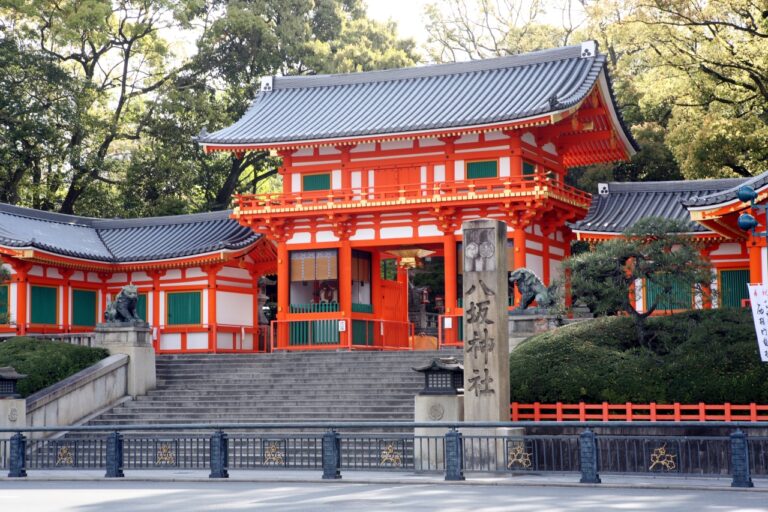
Dig deeper into the highlights of [Yasaka Shrine]! Unknown attractive sports...
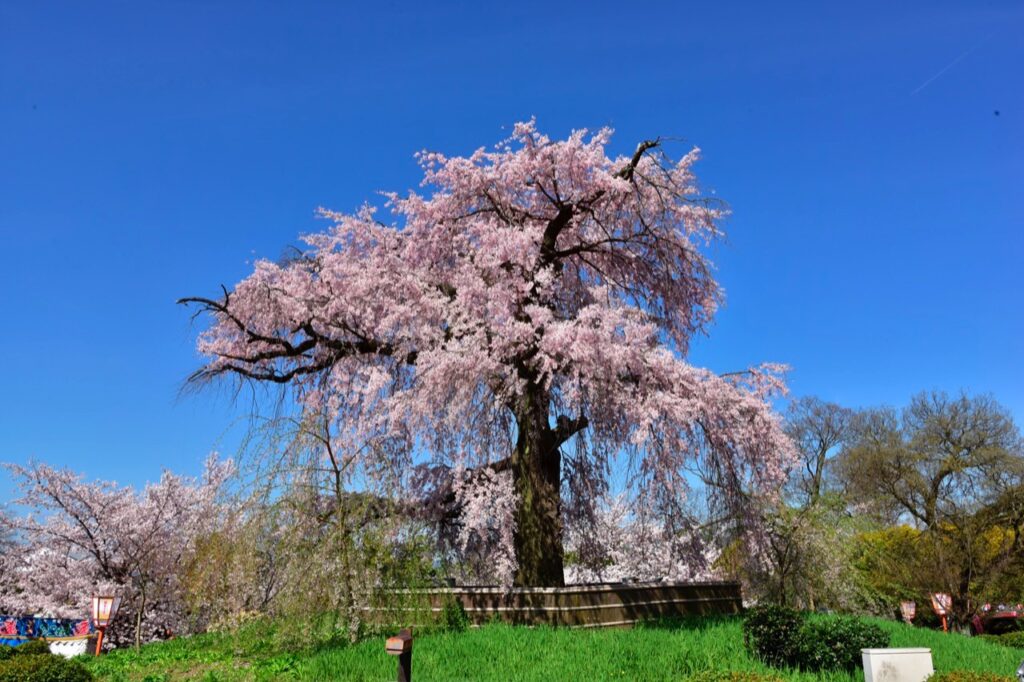

Maruyama Park is located in the town of Gion, but boasts a vast area rich in nature, and is a favorite spot for both residents and tourists. The park features the symbolic Gion weeping cherry tree, a garden filled with tranquil nature and the beauty of a traditional Japanese garden, and numerous other attractions scattered throughout the park.
Maruyama Park is located next to Yasaka Shrine and Chion-in Temple in Higashiyama, and is dotted with historical buildings and beautiful gardens, offering nature in every season. Maruyama Park is known for its cherry blossoms, including the Gion weeping cherry tree, and in the fall, the autumn leaves create a beautiful scene. The park was established in 1886 (Meiji 19) by Jihei Ogawa VII, and is the oldest park in Kyoto City. The garden is a Japanese-style garden with a circular path around a pond, and is designated as a national place of scenic beauty.
In the Heian period (794-1185), this area, which later became Maruyama Park, was a wilderness where makuzu (scarlet kadsu) and susuki (Japanese pampas grass) grew thickly, and the area including the premises of Anyoji Temple and Chorakuji Temple at the western foot of the east mountain was called "Maruyama" or "Minambata. The name "Enzan" is said to be derived from the mountain name "Jienzan" of An'yō-ji Temple.
In the Edo period (1603-1867), Rokuami, the head priest of An'yoji Temple, started "renting out rooms" to the public, and the area became lively. With the view and the beauty of the forest and springs as a backdrop, the area became a famous place for poetry and haiku poems, song and dance, and entertainment. Later, in 1886 (Meiji 19), Kyoto Prefecture designated the entire Maruyama area as a park, and the area was developed into the present Maruyama Park.
In 1913, landscape architect Jihei Ogawa VII created a Japanese-style garden with a pond in the center. The Hyotan Pond is fed by a waterfall drawn from underground water, and has an interesting stone bridge that combines rectangular and circular stones. The garden, which makes the most of the terrain leading to the Higashiyama mountains, is surrounded by a view of the mountains and other elegant natural features, providing a relaxing and peaceful place to rest and forget that downtown is just around the corner.
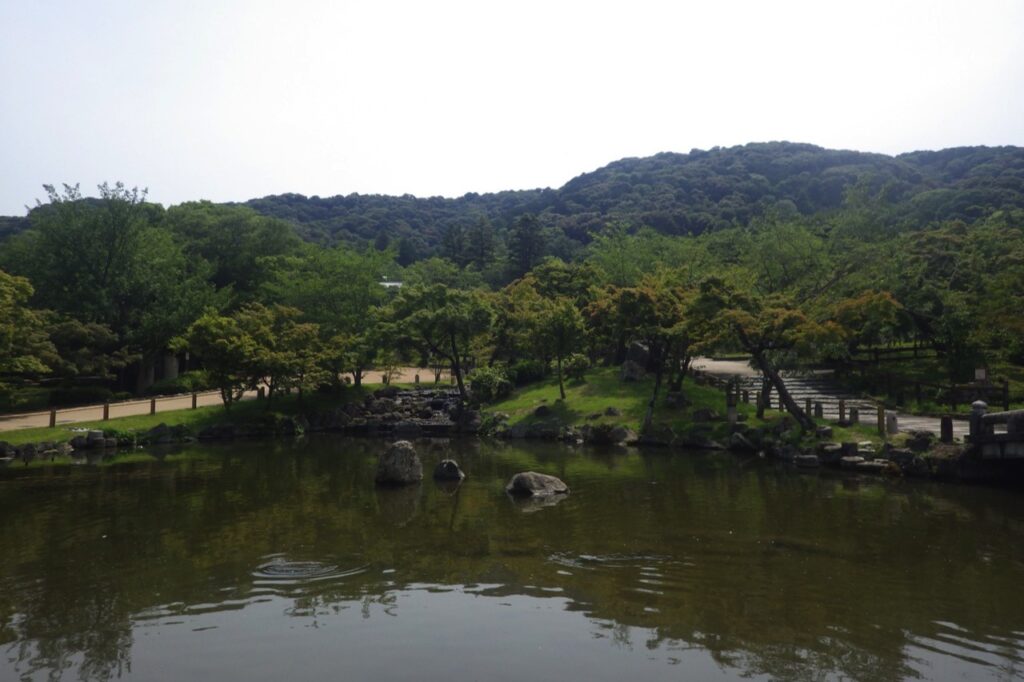
garden

In spring, about 500 cherry trees bloom in the park, making it one of the best cherry blossom viewing spots in Kyoto. The Gion weeping cherry tree that stands tall in the center of the park is officially called a single white higan weeping cherry tree, but the current one is actually the second generation. The first generation tree died after about 200 years of age, and the second generation was transplanted by Toemon Sano XV of Ueto.

Gion weeping cherry (Prunus incisa)

In early April, the temple is lit up with bonfires, giving it a solemn and colorful appearance.
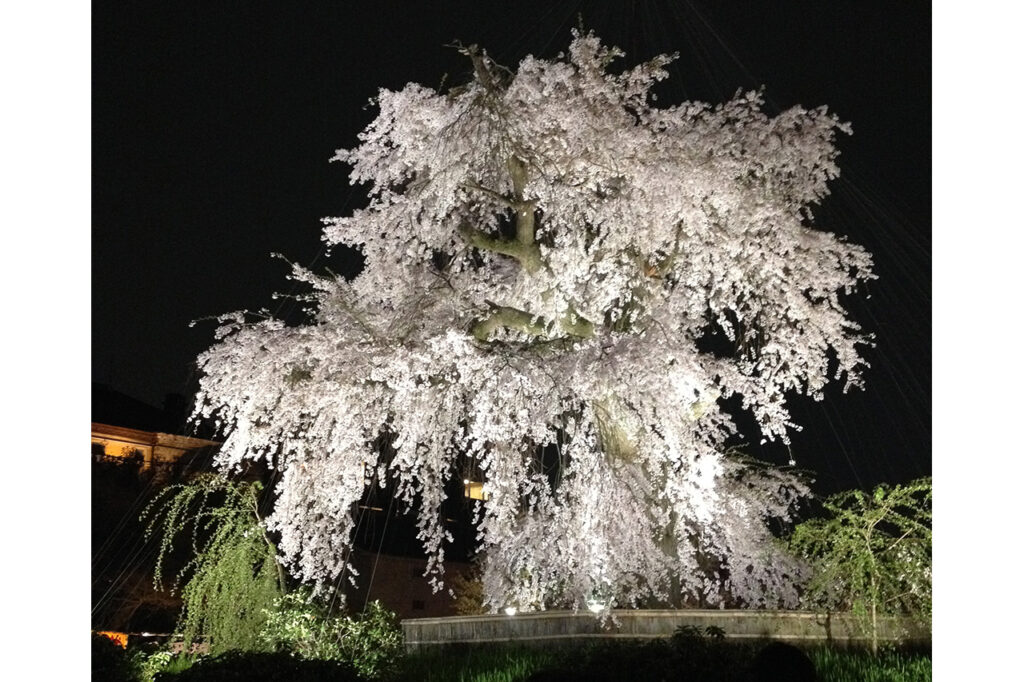
Illuminated Gion weeping cherry blossoms

The Gion Kouta (Gion Kouta song) monument stands by Hyotan Pond, under a maple tree. The lyrics are said to have been written by Mikihiko Osada at a teahouse in Gion called "Yoshiuta. The moon is in the misty eastern mountains, the nightly bonfire is in the haze, and the dream is in the misty night, the red cherry blossoms are in the furisode, and I am in love with Gion, and I am in love with Darari no obi yo. The music was composed by composer Sasa Koka. Every year on November 23, the Gion Kouta Festival is held, where geiko and maiko of Gion add flowers to the monument and recite the lyrics.
The bronze statues of Ryoma Sakamoto and Shintaro Nakaoka, heroes at the end of the Edo period, stand in the southeast corner of the park. The statues are considered one of the "three great bronze statues in Kyoto" along with those of Takayama Hikokuro on the east side of the Sanjo Bridge and Kadokura Ryouchi in Kameyama Park. Take a stroll in the garden, where a peaceful time now passes, while remembering the warriors who were active in the Higashiyama area during those turbulent times.
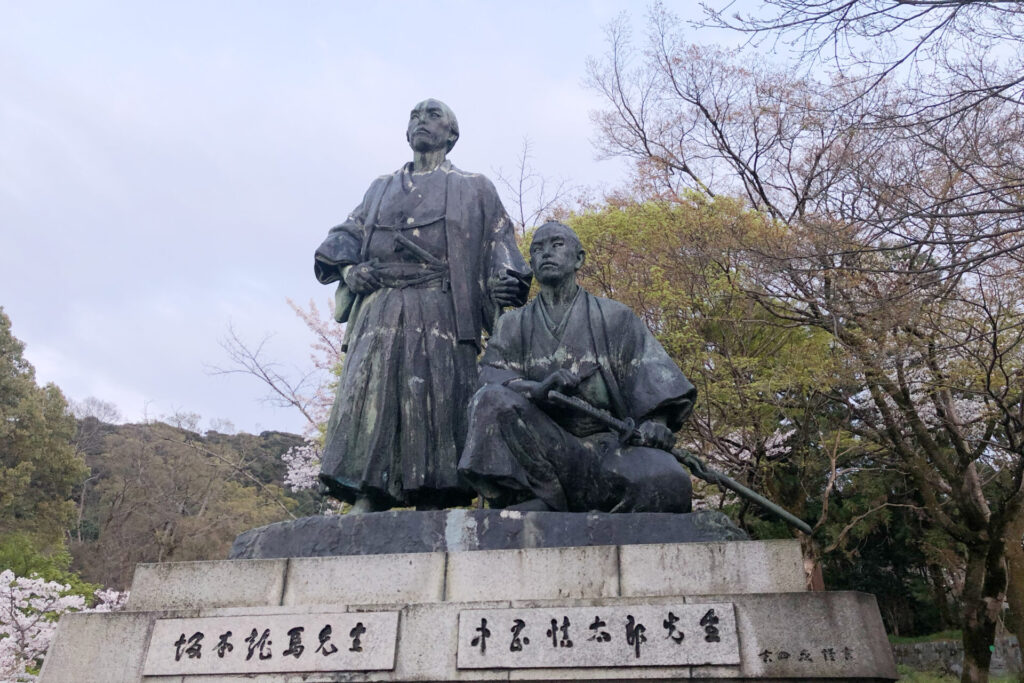
Bronze statues of Ryoma Sakamoto and Shintaro Nakaoka

The Maruyama Park Music Hall opened in 1927 as an outdoor facility for music, cultural events, and gatherings. With a capacity of approximately 2,500 people, jazz and folk concerts have been held against a backdrop of greenery connected to the Higashiyama mountain range.

Maruyama Park Music Hall

Maruyama Park is dotted with many historical sites, teahouses, and ryotei (Japanese-style restaurants), but there are also many attractions in the surrounding area.
The adjacent Western-style building [Chorakukan] is the site of a villa built by Kibei Murai, a Meiji-era businessman who was known as the "King of Tobacco. Today, it is used as a hotel, restaurant, and café, providing visitors with an elegant space.
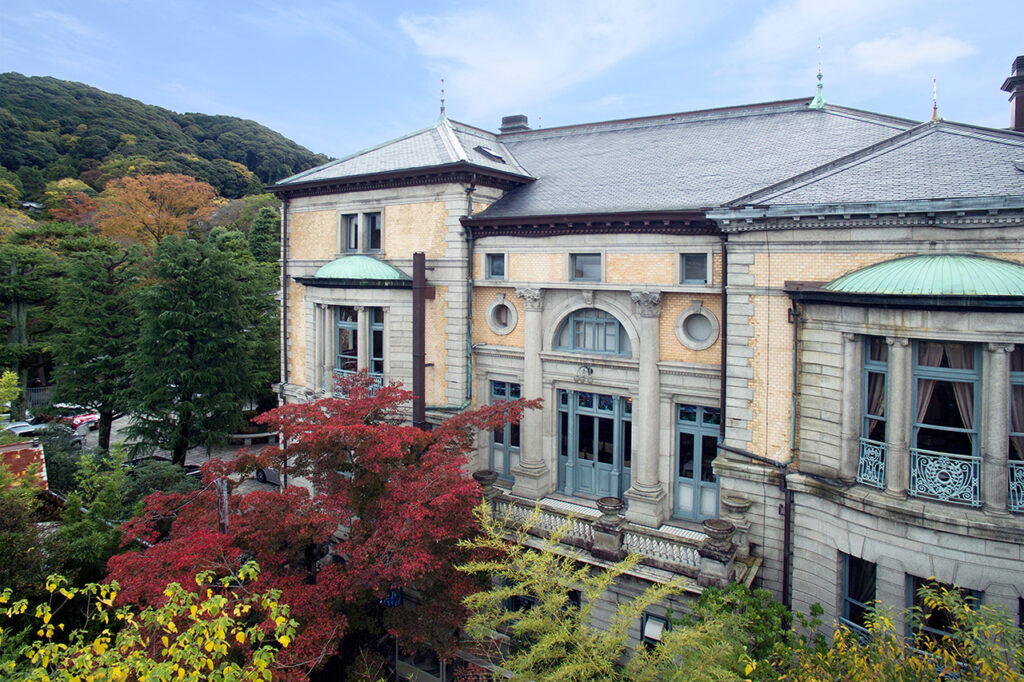
Chorakukan

Nene-no-michi, which runs from the park to the west side of Kodaiji Temple, is a stone-paved path running north-south in front of Kitchen Hill. It is named after the Koudaiji Temple and Entokuin Temple, both of which are associated with Nene, the wife of Toyotomi Hideyoshi.
[The area from Maruyama Park to Kodaiji Temple, Hokanji Temple, Niningsaka, and Sanneizaka is known as the Sanneizaka Important Preservation Area for Groups of Traditional Buildings, and is lined with buildings built from the Edo period to the Taisho period. Take a stroll in the Higashiyama area, where you can feel the history and atmosphere of the area, together with Maruyama Park.
Over 600 interviews per year! An order site carefully selected by the editors who knows Kyoto and Shiga.
nowOfficial LINE friend registration500 yen OFF coupon is being issued!
Distributed every Friday morning at 8:00 am! From new restaurant information to event information that we want to share with you, We deliver articles about Kyoto that are useful to know. About 20,000 people have registered.Click here to add a friend!
 News
News Feature article
Feature article Featured event
Featured event